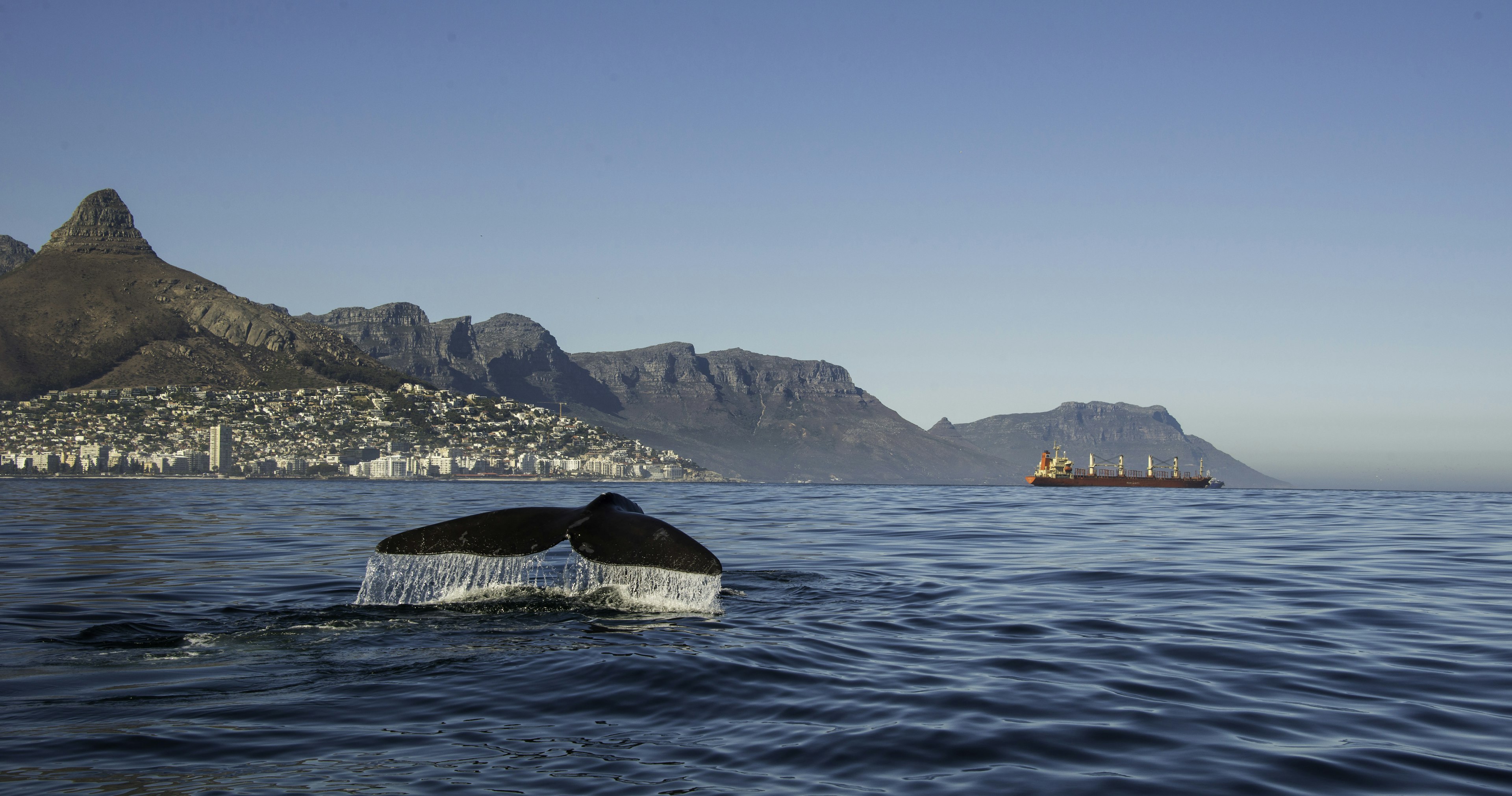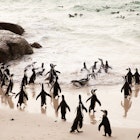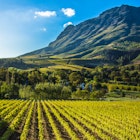

Boulder's Beach colony numbers 3000 and is the ideal place to see the African penguin. Andrea Willmore / Shutterstock
Blessed with a spectacular natural setting, Cape Town is surely one of the world’s most scenically beautiful cities. And between Table Mountain National Park, the V&A Waterfront and the new Zeitz Museum of Contemporary Art Africa, the city certainly has a lot to offer.
But what most visitors to the Mother City, as Cape Town is also known, miss out on is the city’s urban wildlife. Overshadowed as it is by South Africa’s more famous Big Five animals, many people don’t realise that Cape Town is actually a dream destination for wildlife lovers.
From African penguins and fur seals to southern right whales and rock hyraxes, here’s our guide to five of Cape Town’s urban fauna and how to see them.
African penguin
African penguins, formerly known as jackass penguins because of the braying sound they make, are the only penguins who inhabit the African continent. At only 68-70cm tall and weighing 2-5kg, they are surprisingly small compared to their larger Empire and King penguin cousins. African penguins can swim at an impressive 20km/h and can dive to a depth of 130m in pursuit of fish, crustaceans and small squid. Tragically, despite measures from the South African government to protect the birds, the African penguin is an endangered species, their population having dropped from four million at the beginning of the 19th century to 200,000 at the beginning of the 21st, to only 55,000 today.
Where to see them: the lively but stinky penguin colony installed at the aptly named Boulders Beach in Simon's Town, 40km south of Cape Town, is the best place to see these endearing little birds. From just two breeding pairs in 1983, today the colony numbers approximately 3000, though this number is now dropping at a worrying pace. There are three boardwalks beyond which you’re not allowed to pass, but you’ll be able to observe them up close, breeding, nesting, waddling, swimming, and interacting with each other and with their young. There’s an entrance fee of R152 as Boulders Beach forms part of Table Mountain National Park. The fee goes toward the conservation of the penguins. If you want to avoid the crowds — of humans, that is — walk about five minutes southeast to the small cove. There may be a few penguins there, but nothing close to what you’ll find at the official site.

Southern right whale
While many types of whales swim in Cape waters, the most common are right whales. Southern right whales are distinguishable by their callosities (rough patches of skin covered in barnacles) on their heads in addition to a long arching mouth and trademark double blowhole. They average 15m in length and can weigh a staggering 60 tonnes. The whales migrate annually from Antarctica to the Cape Town coast to calve their offspring, usually arriving in June and staying until November, regaling locals and tourists alike with displays of breaching, fluking (exposing the often white underside of their tail fin), spouting, and spyhopping (raising their head vertically out of the water).
Where to see them: close to the city, the best place to see these gentle giants is in False Bay. On land, the best options are the higher vantage points along the False Bay coastline, such as Cape Point, Boyes Drive between St James and Kalk Bay, and Clarence Drive between Gordon’s Bay and Rooi Els. To get closer, Simon's Town Boat Company offers whale-watching excursions. Further afield, 120km southeast of Cape Town, Hermanus has been rated as one of the top 12 whale-watching destinations in the world by the World Wildlife Fund. Land-based viewing opportunities are good here because the whales often come within metres of the shoreline. A long stretch of cliffs provides plenty of vantage points and there are viewing terraces at the Old Harbour. During whale-watching season, a whale crier alerts watchers to the presence of whales by blowing on a kelp horn. For up-close-and-personal encounters with right whales, humpback whales, dolphins, and other cetaceans, Hermanus Whale Cruises, Whale Watching Hermanus and Southern Right Charters offer boat-based excursions. Walker Bay Adventures also give you the chance to watch whales from a sea kayak.
11 family-friendly activities in Cape Town

African fur seal
The African fur seal, more commonly known by its former name – the Cape fur seal – is the largest of all the fur seal species. These seals have strong, stocky bodies protected by a velvety coat of dark grey or brown fur, tiny external ear flaps, and large, wide heads. The males measure an average of 2.3m in length and weigh 200-300kg. Their rear flippers are quite short, with fleshy tips, while the front flippers are longer and have a little bit of hair on them.
Where to see them: the seals in Cape Town are used to humans and are not timid. They can usually be spotted dozing in the sun at the V&A Waterfront, but this is definitely not the most pleasant place to see them as their offensive odour can be detected from dozens of metres away. If you want to meet the pinnipeds at their social and playful best, you’ll need to hop on a boat tour or join a seal-snorkelling excursion to Seal Island, a rocky islet about 6km from the beaches of False Bay. Based in Hout Bay, Cape Town Bucket List and Duiker Island Cruises both take smalls boats out to the island where you’ll observe (or swim with) a few hundred seals lounging, barking, throwing themselves off the rocks, and fishing or cavorting in the ocean. If you visit in the off-season you’ll have the show all to yourself.
10 alternative ways to explore Cape Town’s V&A Waterfront

Rock hyrax
More commonly known to locals as rock dassies, these furry little herbivores are no larger than a groundhog, though they’re actually the closest living relative to the elephant. Dassies are characterised by short, stocky bodies, small ears, short tails, sweet liquid brown eyes, black button noses, and thin, curved lips that give the uneasy impression they’re smiling when they’re staring at you. As their name implies, dassies favour rocky, mountainous areas where there a lot of large boulders between which they can find shelter and shade, and atop which they enjoy basking in the sun in the early morning and late afternoon.
Where to see them: at Table Mountain hanging out on the rocks around the park or by the cable car, or co-existing with the penguins at Boulders Beach, between Simon’s Town and Cape Point.

Malachite kingfisher
With more than 610 recorded bird species in Cape Town, the Mother City is a birder’s paradise. One of the most colourful and most striking of Cape Town’s avian species is the malachite kingfisher. The bird is common in South Africa but also elusive, which explains why birders and photographers are so keen to capture them with their lenses. At only 3cm long, these Lilliputian river kingfishers are tough to spot from a distance, but their purple, black, malachite green and bright metallic blue plumage and long orange beaks help make them stand out.
Where to see them: malachite kingfishers are attracted to wetland habitats. In Cape Town you can observe them from the bird hides at Rietvlei Wetland Reserve, a 15-minute drive from the CBD, or at Intaka Island, a wetland and bird sanctuary curiously located within the grounds of a shopping centre.
Explore related stories



 Wildlife & NatureEnjoy the simple life at these 10 top agritourism farm stays
Wildlife & NatureEnjoy the simple life at these 10 top agritourism farm staysMar 16, 2022 • 7 min read
 National ParksSouth Africa safaris for first-timers: 8 things to know before you book
National ParksSouth Africa safaris for first-timers: 8 things to know before you bookOct 5, 2021 • 8 min read
 Sustainable TravelThe world's most remote island is now the Atlantic's largest marine park
Sustainable TravelThe world's most remote island is now the Atlantic's largest marine parkNov 18, 2020 • 2 min read

 Wildlife & NatureWhy are whales and sharks disappearing from Cape Town's coast?
Wildlife & NatureWhy are whales and sharks disappearing from Cape Town's coast?Oct 24, 2019 • 2 min read
 Sustainable TravelAirbnb wants to help travellers interact ethically with animals
Sustainable TravelAirbnb wants to help travellers interact ethically with animalsOct 4, 2019 • 2 min read

